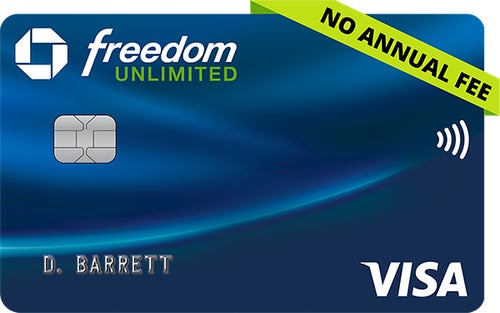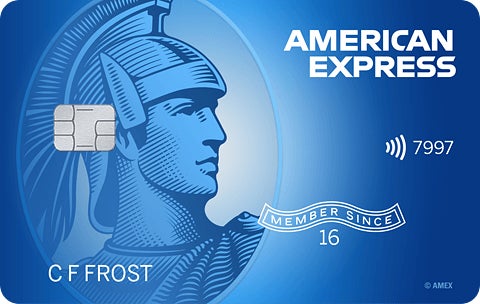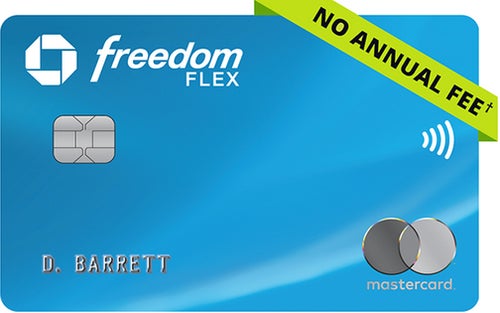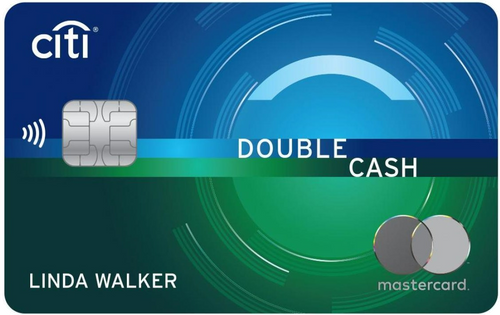| Balance Transfer Rating: | 3.9 / 5 |
| Introductory Offer: | 4.0 |
| Net Value: | 2.5 |
| Features: | 4.0 |
| Issuer Customer Experience | 3.0 |
In a Nutshell:
One of the best cash back cards on the market, the Citi Double Cash card also offers one of the longest intro APR balance transfer deals around.
0% Introductory Period 0% intro for 18 months on Balance Transfers |  |
Transfer Fee Intro balance transfer fee of 3% or $5 (whichever is higher), for balance transfers completed within the first 4 months of account opening. After that, fee will be 5% of each transfer ($5 minimum) |  |
Introductory Purchase APR None |  |
Regular APR 18.24% - 28.24% (Variable) |  |
Annual Fee $0 |  |
Citi Customer Service Ratings
|  |
Other Notable Features: Purchase protection, damage and theft protection, lost wallet service, free concierge services, Apple Pay
| Cash Back Rating: | 4.1 / 5 |
| Rewards Value: | 4.0 |
| Annual Percentage Rate: | 3.0 |
| Rewards Flexibility: | 4.0 |
| Features: | 3.0 |
| Issuer Customer Experience | 3.0 |
In a Nutshell:
If you regularly pay off your card in full each month, it’s hard to beat the cash back rewards on the Citi Double Cash card: It offers 2% cash back (1% when you buy and an additional 1% as you make payments for those purchases), making it an ideal card for purchases that don’t qualify for larger bonuses.
Rewards Rate
|  |
Sign-up Bonus
|  |
Annual Bonus None |  |
Annual Fee $0 |  |
APR 18.24% - 28.24% (Variable) |  |
Rewards Redemption
Cons
|  |
Customer Experience
|  |
Other Notable Features: Purchase protection, damage and theft protection, Apple Pay, Citi Entertainment, May offer Mastercard World Elite benefits
If you’re in the market for a cash back card, but want a hassle-free earning experience, take a look at the Citi Double Cash® Card. It charges no annual fee and has a simple rewards structure that awards cardholders up to 2% cash back: 1% cash back on everything they buy and an additional 1% cash back as they pay off those purchases.
The flat rate makes it a great choice for people who prefer to use one credit card for all their purchases. The card also offers an intro APR offer on balance transfers, which effectively makes it one of the few balance transfer cards that offers rewards. But the lack of an intro APR offer on purchases may be a dealbreaker if you want maximum payment flexibility in your first year.
Pros
- The tried and true 2% cash back rate (1% when you buy, 1% when you pay) makes this a flexible card for most wallets.
- Intro APR on qualifying balance transfers offers an extra layer of utility to the card.
- Can pair with the Citi Premier card to potentially boost any earned rewards.
Cons
- You may earn more with a card that offers a higher rewards rate in specific spending categories.
- Lacks an intro APR on purchases, something you can find on a few major competitors.
- Sign-up bonus carries a high spending requirement
Why you might want the Citi Double Cash Card
The Citi Double Cash Card is one of the best no-annual-fee credit cards available thanks to its simple cash back rewards and flexible redemption options. And while other issuers on the market have finally released some 2% cash back cards of their own, the Double Cash remains a top contender.
It doesn’t carry a ton of perks, but when it comes to flat-rate cash back cards, less is more. Instead of tracking spending or enrolling in bonus categories, you can simply use the card for all your general spending and enjoy streamlined, consistent cash back. Here are some of the key reasons minimalists should consider the Citi Double Cash.
Unlimited flat-rate rewards on all of your spending
As long as you make on-time payments, you’ll earn the full 2% cash back on all of your purchases with no limits. Compared to credit cards that feature bonus categories with different rewards rates, this is a stress-free option. To get the most value out of the Citi Double Cash Card, be sure to pay your bill on time each month. Any month you don’t meet the due date, you will only earn 1% cash back for your purchases.
With flat-rate cards, you don’t have to think about which credit card will give you the most points for a purchase. There are typically no spending caps to track and no rotating categories that require activation or only earn bonus points during certain times of the year. If you want an easy, no-fuss way to earn rewards on your purchases, flat-rate cards are the way to go.
New bonus offer
Unlike many no-annual-fee cash back cards, the Double Cash Card doesn’t typically carry a sign-up bonus. However, the card is currently offering a solid bonus of 20,000 ThankYou points after you spend $1,500 on purchases in your first six months as a cardholder (which can be redeemed as $200 cash back).
This matches the value you’ll get from many competing cash back card bonuses. And while the spending requirement is relatively high (many cards only require $500 to $1,000 in spending to earn a bonus worth $200), you’ll also have plenty of time to meet the requirement (six months versus the typical three months you’ll find on most cards).
Since this card doesn’t usually carry a bonus, now is a great time to apply. After all, there’s no telling how long this offer will be available.
Flexible redemption options
The Double Cash Card recently changed from earning cash back to earning Citi ThankYou points. You can still redeem your points for cash back at a rate of 1 cent per point (essentially no different than earning 2% cash back), but you no longer need to convert your rewards to ThankYou points to enjoy redemption options like gift cards and travel. You can get cash back as a direct deposit, statement credit or check, with no minimum redemption requirement.
| Tip: You can also set up a direct deposit into a non-Citi checking account, but you must have paid your Citi credit card bill from that account at least two times to qualify. |
Cardmembers can also use their points to:
- Pay for travel purchases, such as airline tickets, cruises, hotels and rental cars
- Pay for purchases at participating stores (enrollment required)
- Make charitable contributions with participating charities
- Make student loan or mortgage payments
The value of your points may vary if you choose to redeem for anything other than cash back. For example, 1 point is only worth 0.8 cents when redeeming to pay for Amazon purchases.
On the flip side, when it comes to travel, it may be possible to increase the value of your rewards. Travel enthusiasts looking to maximize their Citi rewards can pair the Citi Double Cash Card with the Citi Premier® Card(The Citi Premier Card is no longer available). This is a travel rewards card packed with travel perks. Unlike the Double Cash Card, it has access to all of Citi’s 16 airline and hotel transfer partners. Depending on the partner, it’s possible to nearly double the average value of your points, based on Bankrate’s latest point valuations.
Long 0% intro APR offer on balance transfers
As an added perk, the Citi Double Cash Card comes with a lengthy balance transfer offer. Cardholders receive a 0% introductory APR on balance transfers for the first 18 months of account opening (18.24% - 28.24% (Variable) thereafter).
This is one of the longer balance transfer offers available, making the Citi Double Cash Card a great option for people who want to pay down credit card debt but still enjoy a great rewards rate once they’ve paid down their balance.
Just keep in mind that you’ll be charged an intro balance transfer fee of $5 or 3%, whichever is higher, on balance transfers completed within your first four months. After that, your fee will be 5% of each transfer, or $5, whichever is higher.
See Related: How to transfer a balance to a Citi credit card
Why you might want a different card
There’s a lot to love about the Citi Double Cash Card, but it does lack a couple of perks often found on cash back credit cards. And Citi’s customer service may make some people think twice before applying.
No 0% intro offer on purchases
While the Citi Double Cash boasts an impressive balance transfer offer, it doesn’t include an introductory APR for new purchases. This will disappoint anyone hoping to finance a larger purchase and avoid interest charges for a limited amount of time.
The Wells Fargo Active Cash® Card stands out as the better choice. It has a solid 0% introductory APR offer of 12 months from account opening for both purchases and qualifying balance transfers (followed by a 19.24%, 24.24%, or 29.24% Variable APR).
Mixed-bag customer service
Cardholders may find Citi’s customer service lacking compared to other major issuers, such as American Express or Discover. In the most recent J.D. Power customer satisfaction survey, Citi ranked sixth in the middle of 11 other national issuers with a slightly below-average satisfaction score of 808.
On the bright side, Citi offers 24/7 customer service and an online chat feature that connects you to a live representative, helping you to get a quick response from customer service when you have a problem or question.
How does the Citi Double Cash Card compare to other no-annual-fee cash back cards?
The Citi Double Cash Card is great because it’s simple to use and earn rewards. But strategic spenders might be able to get more value out of another cash back card. Here’s a quick look at a few popular alternatives that don’t charge annual fees.
 |  |  |
Rewards rate
| Rewards rate
| Rewards rate
|
| Welcome bonus | Welcome bonus | Welcome bonus |
| Annual fee $0 | Annual fee $0 | Annual fee $0 |
Other things to know
| Other things to know
| Other things to know
|
Citi Double Cash® Card vs. Chase Freedom Unlimited
The general rewards rate on the Chase Freedom Unlimited is not quite as high as the Citi Double Cash Card – only 1.5 percent cash back on general purchases. But the Freedom Unlimited also comes with other bonus categories to help maximize your rewards earnings. These bonus categories include 5% cash back on travel purchased through Chase Travel and 3% cash back on dining and drugstore purchases.
Despite the lower flat rate of 1.5%, many people could earn more cash back with the Freedom Unlimited versus the Double Cash, especially if their everyday spending aligns well with these bonus categories.
Citi Double Cash® Card vs. Blue Cash Everyday® Card from American Express
Unlike the Citi Double Cash Card, the Blue Cash Everyday offers bonus categories rather than a flat cash back rate. With the Everyday card, users earn 3% cash back at U.S. supermarkets, U.S gas stations and U.S. online retail purchases (on up to $6,000 per year in purchases, then 1%), and 1% on other purchases. These categories don’t change, so you won’t have to worry about rotating categories that need activation. But users must keep track of the $6,000 annual spending limit on purchases because once they reach that cap, they only earn 1% cash back for the rest of the year.
When it comes to a simple rewards experience, the Double Cash card is the clear winner. However, the Blue Cash Everyday can be more rewarding if your spending habits align with its popular spending categories.
Citi Double Cash® Card vs. Chase Freedom Flex®
The Chase Freedom Flex takes more effort than the Citi Double Cash Card, but it does come with some great perks. The Freedom Flex has a sign-up bonus that is easier to qualify for than many other welcome offers. You can earn a $200 bonus after spending just $500 on purchases in the first three months of account opening. It also comes with fixed and rotating cash back categories, making it easier for cardmembers to quickly earn maximum points.
You’ll have to enroll each quarter to receive the 5% cash back in rotating bonus categories (on up to $1,500 in purchases per quarter, then 1%). This extra step can be a big drawback for cardholders who don’t want to put a lot of thought into their spending. But if you are willing to do a little extra work, Freedom Flex may earn more cash back – especially if you max out the spending cap on bonus categories each quarter.
Pairing the Citi Double Cash Card with other rewards cards
Since the Citi Double Cash Card earns a flat rate of cash back, it is an ideal choice for pairing with rewards cards that offer bonus categories. The ability to convert cash back to ThankYou points also makes pairing with another Citi rewards card, like the Citi Premier (The Citi Premier Card is no longer available) (which offers a great rewards rate on air travel, restaurants, hotels and cruise lines) a no-brainer.
If you’d rather stick to cash back, consider the rewards you could earn if you paired the Citi Double Cash with the Blue Cash Preferred® Card from American Express, which earns a whopping 6% cash back on U.S. supermarket purchases (up to $6,000 in purchases per year, then 1%). If you use the Blue Cash Preferred for all purchases that earn bonus points and the Citi Double Cash Card for general purchases, you can earn a top-tier rewards rate.
Potential rewards rate: Blue Cash Preferred + Citi Double Cash Card
| Combined earning categories | Average earning rate | Cash back earned ($15,900 spend) |
| 6% cash back on U.S. supermarket purchase (up to $6,000 in purchases per year, then 1%) 6% cash back on select U.S. streaming subscriptions 3% cash back on U.S. gas station purchases and transit 2% cash back on general purchases (1% when you buy, 1% when you pay on time) | 3.07% | $488 |
We estimate the overall rewards rate for this pairing at around 3.07% cash back, which brings in around $488 a year on a $15,900 spend.
| Tip:The Citi Double Cash Card also makes a great pair for cards that earn rewards on rotating bonus categories – like the Chase Freedom Flex. By staying on top of rotating categories and enrolling each quarter, you can earn a higher rate of cash back on certain purchases. Then, you can use the Citi Double Cash Card to boost your rewards rate on all other purchases. |
How to use the Citi Double Cash Card:
The Citi Double Cash Card’s straightforward nature makes it a breeze to maximize its base cash back value. And if you’re interested in pushing that value even further, you have an option with the Citi Premier Card (The Citi Premier Card is no longer available).
- Pay your bill on time each month to earn the full rewards rate.
- If you transfer a balance, make a plan to pay it down in the introductory APR period to avoid interest charges.
- Pair the Citi Double Cash Card with the Citi Premier Card (The Citi Premier Card is no longer available) for its transfer partners or another rewards card with bonus categories to maximize your rewards.
Is the Citi Double Cash Card right for you?
The Citi Double Cash Card is a dependable, no-hassle option that remains a strong cash back pick even as other issuers catch up with their own 2 percent cash back cards. The card’s balance transfer offer also makes it an excellent choice for consumers primarily looking to consolidate their debt, but want a card that can continue to deliver value after the intro period.
The only sore spot is the lack of an intro purchase APR, which is especially handy on rewards cards. But even without this perk, the Citi Double Cash is a flexible choice for anyone looking for a simple way to earn rewards or to pair a generous flat-rate card with a high-earning rewards card to boost rewards further.
*All information about the Chase Freedom Flex℠ has been collected independently by CreditCards.com and has not been reviewed by the issuer.
Our reviews and best card recommendations are based on an objective rating process and are not driven by advertising dollars. However, we do receive compensation when you click on links to products from our partners. Learn more about our advertising policy
Frequently Asked Questions
All reviews are prepared by CreditCards.com staff. Opinions expressed therein are solely those of the reviewer and have not been reviewed or approved by any advertiser. The information, including card rates and fees, presented in the review is accurate as of the date of the review. Check the data at the top of this page and the bank’s website for the most current information.
Responses to comments in the discussion section below are not provided, reviewed, approved, endorsed or commissioned by our financial partners. It is not our partner’s responsibility to ensure all posts or questions are answered.
Partner Offer: Citi is an advertising partner
